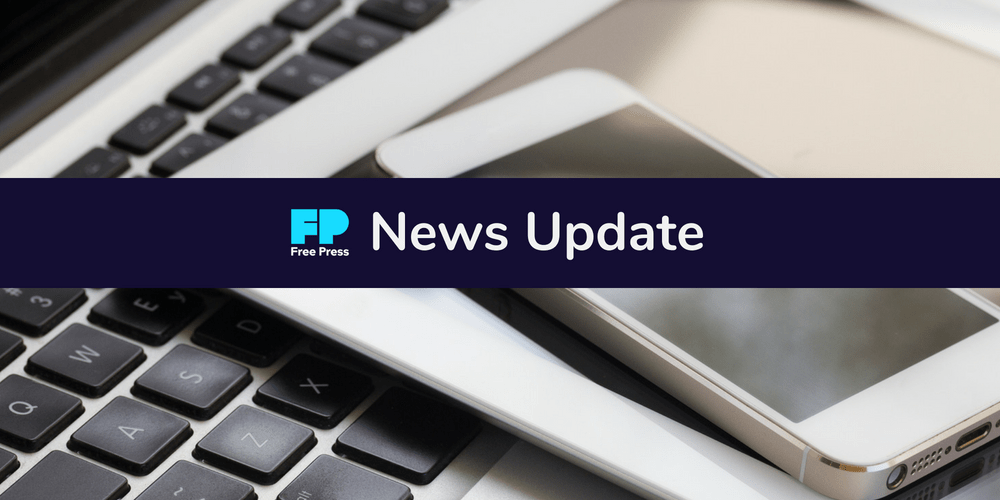Matt Wood Testifies Before Congress in Support of the Save The Internet Act

WASHINGTON — What follows is the spoken testimony of Free Press Action Vice President of Policy and General Counsel Matt Wood, which will be delivered today before the House of Representatives Subcommittee on Communications and Technology.
Wood is testifying in support of the Save The Internet Act of 2019 (H.R. 1644), which repeals the Trump FCC’s disastrous 2017 decision to gut the Net Neutrality protections, and restores the 2015 Open Internet Order that provides a framework for safeguarding the open internet under Title II of the Communications Act.
Wood’s full written testimony is available here (PDF).
Regarding “Legislating to Safeguard the Free and Open Internet”
Chairmen Doyle and Pallone, Ranking Members Latta and Walden, and subcommittee members: Thank you for inviting me.
Free Press Action is a nonpartisan nonprofit with 1.4 million members. And we support H.R. 1644, the Save The Internet Act of 2019.
Our members know that having equitable access to technology and information is the key to making change, and making a living.
Net Neutrality is an issue of economic and racial justice. It’s a timeless nondiscrimination law safeguarding people’s rights to say and see what they want online, free from unjust interference by ISPs.
This bill restores the FCC’s 2015 Open Internet Order — released four years ago today — and restores those rights. It brings back the three bright-line bans on blocking, throttling and paid prioritization.
But it does more than that, and that’s a good thing. It restores the whole FCC decision that adopted those rules, put them on the bedrock laws in Title II we need, and forbore from the parts we don’t.
Restoring the 2015 framework is precisely the right approach on the law and facts, and it’s tremendously popular too.
Huge majorities opposed its repeal. 86 percent — including 82 percent of Republicans — supported keeping the 2015 rules.
So when I hear we can’t have the 2015 rules back because we need a bipartisan solution, it reminds me of the Princess Bride line: “You keep using that word. I do not think it means what you think it means.”
This bill restores the FCC’s power to make new rules, preventing new forms of ISP discrimination.
That’s why Section 202 of the Communications Act is crucial. The FCC needs that authority to address any unreasonable discrimination, like AT&T’s schemes to favor its own video content and voice services, or Comcast’s abuse of interconnection points to slow traffic to a crawl.
Provisions like Section 201 are crucial too. It allows the FCC to address unjust and unreasonable ISP behavior, like Verizon slowing down firefighters’ data.
Those who cynically say that wasn’t a “real” Net Neutrality violation suggest that the FCC fiddle while forests and homes burn, rather than have the power to protect people’s lives and public safety.
They also say Title II is somehow too new and untested, and also too old — while claiming, funnily enough, even older antitrust and FTC laws can protect the open internet. Their claims don’t add up.
The FCC has used the 2015 framework with great success for decades, for internet access, wireless voice and business-grade broadband too. When it returned to the right law for Net Neutrality in 2015, that decision was upheld in federal court, twice.
Some still say we have no business applying laws written for “1930s monopolies.” But what about present-day ones?
By 2017, 39 percent of people in the U.S. still had at most one choice for a wired broadband provider offering downstream speeds of 25 megabits per second. At 300 megabits per second, that was 77 percent.
But even if they have a couple of choices, I doubt many constituents back home complain to you that broadband is just so darn affordable and reasonable, they’d be glad for no oversight at all.
Yet while the #SaveTheNet bill restores the FCC’s ability and mandate to watch out for abuses and fraudulent billing, it locks in the FCC’s 2015 decision to forbear from rate setting under Section 205.
It also puts the FCC back on solid ground to protect a whole host of broadband rights outside of Net Neutrality, with provisions like Section 254 offering a solid base for broadband universal service, and Section 224 granting competitive providers access to rights of way.
And it fixes in place the 2015 order’s decision not to apply resale or unbundling obligations in Section 251 that, by their own terms, apply to telephone services alone.
In sum, the bill restores not just the fundamental communications rights internet users need, but the certainty broadband providers had.
That’s why they continued to invest and deploy at the same pace and on the same trajectories they did before the 2015 vote.
New numbers for 2018 show that Chairman Pai’s simplistic and silly promises on booming investment after repeal have not panned out.
Broadband investments and speeds trend up over time, though spending comes in cycles, and it trends that way for rural carriers too.
As my written testimony explains, one witness last month claimed that he couldn’t get a loan or expand his coverage for two whole years, all because of Title II’s supposed shadow.
Yet during the first two years of Title II’s return, he invested $2 million in fiber, and tripled the speeds offered to all of his cable-broadband customers in rural parts of Oregon.
Thankfully, the #SaveTheNet Act cuts through the clutter of false claims about supposed investment impacts to restore all of the rights internet users need.
Thank you.